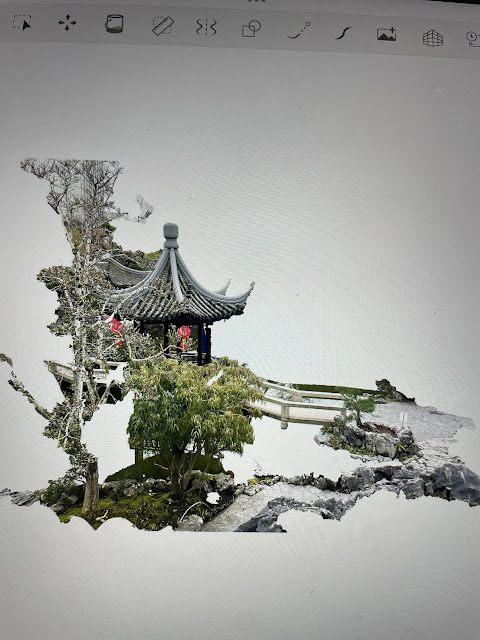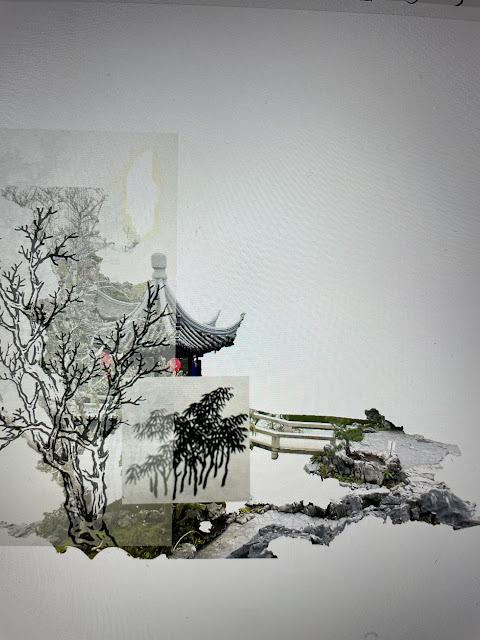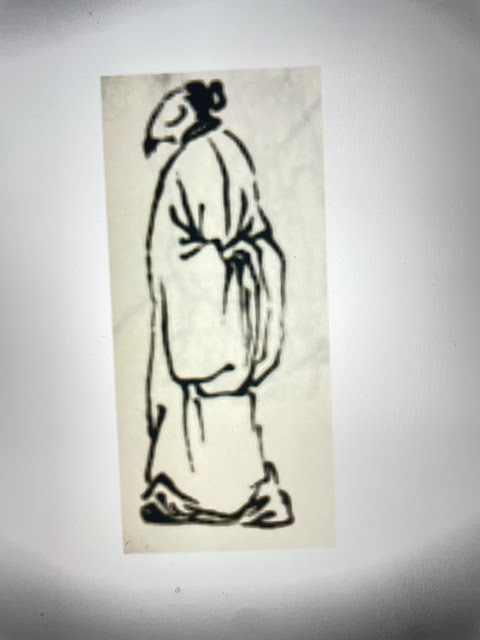There is a a corner window on the second floor of the Tea House at the garden that offers an interesting view of the layout of the classical Chinese garden in town.
This view presents an unassuming and somewhat uninviting perspective. It is akin to an onion, with layers that reveal themselves gradually, exposing the center of the onion. As one peels back the layers, they become acutely aware of the pungent aroma of the bulb and the emotional response it evokes, potentially leading to tears. This view demands careful observation, analysis, and emotional engagement.
The classical tiles and roof ridges are discernible in the two photographs above. The remainder of the building is concealed by foliage. If one overlooks the contemporary structures in the background, the enigmatic structure in the photograph is encroached upon by trees. I can barely discern a breezeway behind the bowed branches of the willow.
One can also see the structure is surrounded by a water feature, with access gained by the manicured and tiled walkway.
The main visitor's plaza or pavilion is kitty-corner from the water feature.
If I were doing a plein-air session, I’d paint everything I see. The Garden’s small footprint makes it tempting to include everything in our field of view, which could result in a busy, illustration-like painting. This is especially problematic if I paint from a photo. Even a simple drawing from a classical garden design textbook, like the one below, seems busy and unbecoming. The western perspective lines don’t help. It’s subjective, but it’s not “artsy”.
My job is to condense and eliminate the clutter and make my proposed painting "artsy" with a Chinese flair. Condensing also serves another purpose, time constraint. I need to plan a lesson that can be finished in 90 minutes, even for a novice, and with the interruption of my jibber jabber.
Since I am going to be exposing the class to Chinese brush painting, I would be using the venerable Mustard Seed Garden. There is no better introduction to classical Chinese methods than that.
I intend to draw the trees in accordance with examples from the Mustard Seed Garden.
and I will be hiding my enigmatic structure with the trees,
Trunks of the trees are written down, paying attention to not put all of them on a level line,
Assigning different varieties of leaves to the trees, to present a mixed woods look. Also penciling in the enigmatic roof lines.
Using broad side-tip brushstrokes I have the visitor's pavilion written in along with the proverbial background foliage. Those are placed as background items. The location of the gazebo-like pavilion has been moved to a more distant background, to make the grounds appear much bigger than it really is.
Thus the whole painting is written with simple brushstrokes. I have the suggestion of a pathway and water. The painting is really about an expression or sentiment if you will. It is not about painting everything we see. It is permissible to move things around to compose our painting.
I am making the lower left corner much darker in value than the upper right corner. Thus there is a contrast of dark versus light, near versus far, dense versus sparse. Those are the elements one looks for in a Chinese painting. Harmony and contrast; who's the host, who's the guest, showing a tangible relationship amongst the subjects in the painting.
To add a story line to the painting, I am going to introduce a person. Again I am going to rely on my trusted buddy Mustard Seed Garden to provide me with an example,
a simple contour outline of a person with folded hands in the back; a pretty familiar portrayal of scholar in the days bygone.

The painting is now complete. The viewer can now actively participate in the formulation of the painting's story. I must say, I have totally revamped the garden. The painting looks nothing like the photos.
Just to make sure such an exercise is possible, I am timing myself in earnest now and see what I can produce in approximately an hour's timespan. This would allow me time to explain and demonstrate to the workshop. I'll have to do that on an easel, which is not the usual flat on the table position.



















































